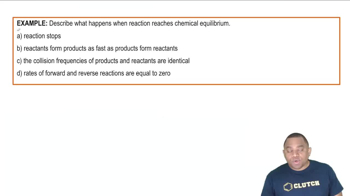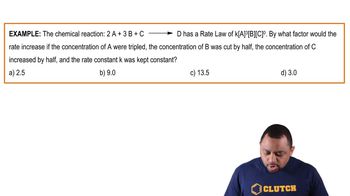The reaction
2 PH31g2 + As21g2 ∆ 2 AsH31g2 + P21g2
has Kp = 2.9 * 10-5 at 873 K. At the same temperature,
what is Kp for each of the following reactions?
(a) 2 AsH31g2 + P21g2 ∆ 2 PH31g2 + As21g2

 Verified step by step guidance
Verified step by step guidance



The reaction
2 PH31g2 + As21g2 ∆ 2 AsH31g2 + P21g2
has Kp = 2.9 * 10-5 at 873 K. At the same temperature,
what is Kp for each of the following reactions?
(a) 2 AsH31g2 + P21g2 ∆ 2 PH31g2 + As21g2
Calculate the value of the equilibrium constant at 427 °C for the reaction
Na O1s2 + 1>2 O 1g2 ∆ Na O 1s2
given the following equilibrium constants at 427 °C.
Na2O1s2 ∆ 2 Na1l2 + 1>2 O21g2 Kc = 2 * 10-25 Na O 1s2 ∆ 2 Na1l2 + O 1g2 K = 5 * 10-29
Calculate the value of the equilibrium constant for the reaction 4 NH31g2 + 3 O21g2 ∆ 2 N21g2 + 6 H2O1g2
given the following equilibrium constants at a certain temperature.
2 H21g2 + O21g2 ∆ 2 H2O1g2 Kc = 3.2 * 1081
N21g2 + 3 H21g2 ∆ 2 NH31g2 Kc = 3.5 * 108
The following pictures represent the initial state and the equilibrium state for the reaction of A2 molecules (red) with B atoms (blue) to give AB molecules. (a) Write a balanced chemical equation for the reaction.